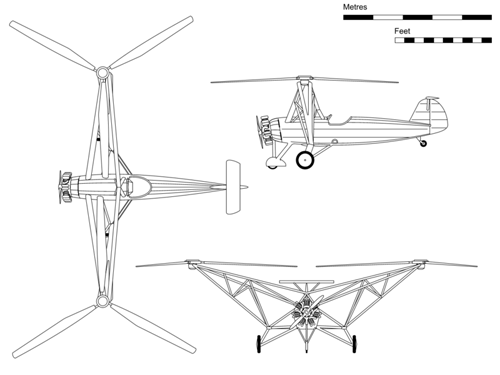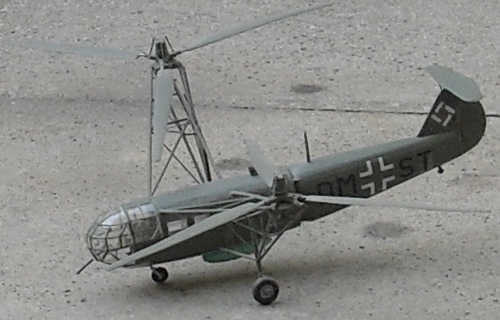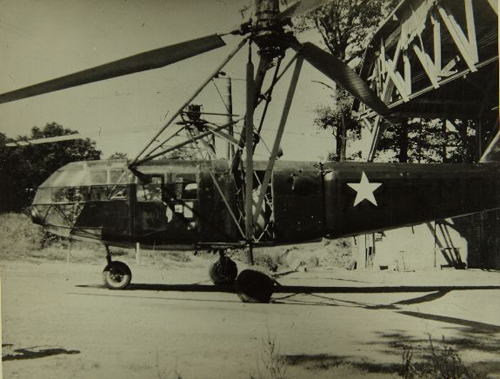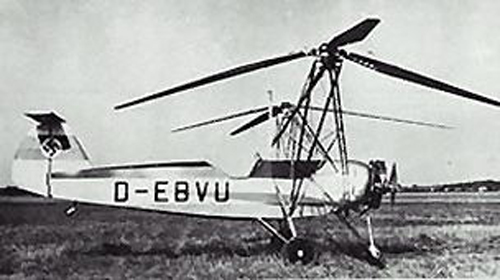Heinrich Focke was a German professor who founded the Focke-Wulf Airplane company.
In the 1930s, he began working on helicopters.
His research focused on the problem of how to control the rotaries. In 1932, Focke built a model helicopter, but it took 4 years for him to build a full-scale one.
In 1936, Focke and his fellow German Gerd Achgelis built the Focke-Achgelis Fa 61 helicopter. It is often called the Focke-Wulf 61.
Related Article – 5 Best Low Time Pilot Jobs With 250 Hours
The helicopter used the fuselage and engine of a Focke-Wulf Stieglitz biplane that featured two cockpits.
Focke and Achgelis used the Stieglitz’ open aft cockpit, but removed the wings. They then built a steel outriggers and used them to mount two rotors, each with three blades, on both sides of the fuselage.
The Fa 61 looked like an autogyro because of its two rotors. But unlike an autogyro, the propellers did not move the machine forward.

The Fa 61 came with a Siemens-Halske Sh14a radial engine, which featured 160 horsepower, or 119 kilowatts. The engine was connected to the rotors with numerous gears and shafts.
Related Article – Instrument Proficiency Check (IPC): 4 Things You Need To Know
Like Louis Bréguet, Focke set up the two rotors to move in opposite directions to minimize the torque. Thus, the Fa 61 was a stable helicopter that was easy to control and could go up and down, forward and backward, and hover in place.

On June 26, 1936, Focke’s helicopter made its first free flight. Focke quickly decided that it needed more fine-tuning. He didn’t care that Bréguet’s helicopter set a number of flight records at this time, since those machines frequently crashed.
On May 10, 1937, Focke and his test pilot Ewald Rohlfs proved that a helicopter would not crash to the ground if the engine failed. Rohlfs flew the Fa 61 to a height of 1,130 feet, or 344 meters, idled the engine, and used the rotors to come down safely.
After additional adjustments to the Fa 61, Focke and Rohlfs were able to break most helicopter records that stood at the time. The Fa 61 flew for 1 hour and 20 minutes straight; flew at 76 miles, or 122 kilometers, an hour; and flew to an altitude of 11,243 feet, or 3,427 meters.
Many experts regard the Fa 61 to be the most successful early helicopter.
The Nazi government in Germany quickly realized the potential of Fa 61 and had its famous female pilot Hanna Reitsch test the helicopter.
Reitsch set several new records and flew it into the Deutschlandhalle, Berlin’s sports stadium, for 14 nights in a row for propaganda purposes.
The Nazis allowed Focke and Achgelis to form a new company and build larger helicopters that could lift heavy cargo.
Related Article – Airline Transport Pilot Certificate (ATP): 4 Things You Need To Know
Focke’s Fa 223 Drache featured a 1,000-horsepower, or 746-kilowatt engine; two rotors with blades that spanned 39 feet, or 12 meters; and a passenger cabin with four seats. It could fly at 115 miles, or 185 kilometers, per hour and carry loads up to 1 ton.

The factory where the Drache was produced was bombed before the helicopter could be mass-produced. One model that survived the war was later used to make the first helicopter crossing of the English Channel.

